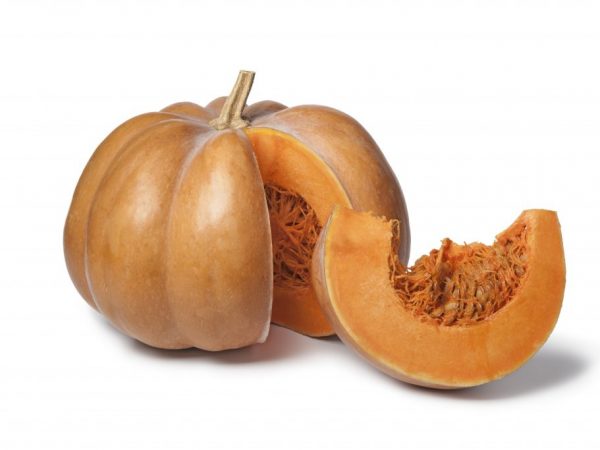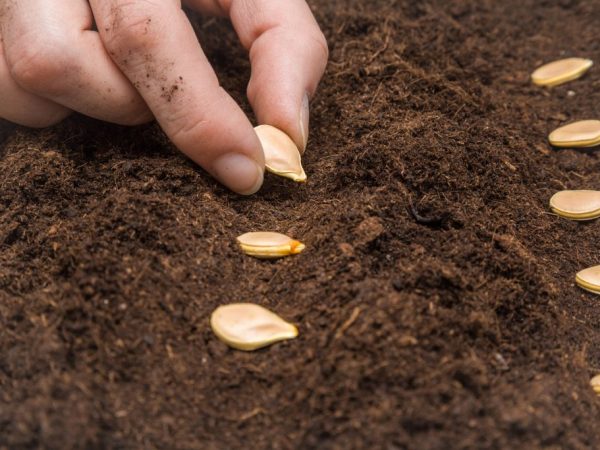Description pumpkin Muscat de Provence
Pumpkin Muscat de Provence originated in France. It is unpretentious in care and cultivation, and with proper storage, it retains its qualities until spring. The composition of nutrients in this product gives odds to many vegetables.

Description pumpkin Muscat de Provence
general characteristics
Butternut pumpkin has a bright orange rich color on the outside and inside and a smooth ribbed shape. Differs in high productivity. Scourges grow rapidly and are about 8 m in length.
The pulp of a ripe vegetable has a very dense texture, so it can be stored for a long time. The fruits are large - they weigh 8-10 kg. The walls are thick, the texture is dense.
Pumpkin has a pleasant aroma and sweet taste.
The plant unravels very well along special nets or along the ground. Ripe fruits can be harvested from the beginning of August until almost the first frost.
Beneficial features
According to its characteristics, the most valuable thing in butternut squash is its low calorie content and a small amount of sucrose, which is why this variety is considered a dietary product. The pulp has a delicate sweet taste and a firm texture that will be similar to that of a young almond.
Pumpkin is versatile - it is useful both fresh (raw) and thermally processed.
Daily use will help:
- removal of excess water from the body;
- the disappearance of edema caused by excess fluid;
- beneficial effect on the nervous system (with systematic use in food);
- normalization of metabolism;
- improving digestion, because not contraindicated for various diets;
- enrichment of the skin with useful microelements;
- pumpkin seeds (raw) cleanse the intestines of parasites.
Planting a pumpkin

Use quality seeds for planting
Pumpkin de Provence ripens in approximately 110-120 days. Seeds of this variety need to be bought from trusted sources, because you can often find a fake or low-quality product.
The package price can vary from 36 to 400 rubles (it all depends on the quality and quantity).
Usually, in early spring, seedlings are germinated from seeds at home in order to plant them in the ground in the first half of May.
The seeds are planted in special soil:
- soil that can be bought in stores (it can be universal or you can use a mixture for cucumbers);
- you can make the soil yourself: from small sawdust, humus peat (1: 2: 1), you can add nitromophos to this mixture (1 tsp per 1 kg of soil).
By the time of planting, the seedlings should reach 10-12 cm and have at least 4 formed leaves. According to the technology, it is better to grow seedlings in special peat pots, and then plant the plant in the ground with them.
Growing will be better on the ground where nightshades grew last year. Do not plant after similar plants: cucumbers, zucchini, onions.
Before planting, the soil must be fluffed (in the fall, fertilizers must be applied to it). You need to plant seedlings at the rate of 1 plant per 1 m².
Care
Pumpkin Muscat de Provence is very easy to grow.The plant is undemanding neither to heat, nor to light, nor to the composition of the soil, but you need to remember that the pumpkin needs to be fertilized. She needs additional nutrients.
It has a positive attitude towards additional feeding, they are effective if the plant is planted in soil poor in nutrients. Do not forget about weeding, remove the weed in time.

An excess of fertilizer can harm the plant.
The pumpkin weaves quickly, you need to allocate more space for it or make special sets so that it drags up, but not high, because the fruits are heavy.
- Watering the seedlings after transplanting into the ground is necessary when the outside air temperature is above 25 ° C for 3-4 days. It is necessary to pour carefully - under the bush, on the ground, without pouring water on the leaves. This is best done in the evening so that the sun's rays do not form a crust.
- For feeding, you need to use purchased preparations, which you just need to dilute with water at home, according to the instructions. These mixtures already contain all the necessary elements. You can use Nitroammofosk by diluting it with water (10 g per 7 l of water).
The main thing is not to overdo it with fertilizers, so that the plant does not burn out from an excess of nutrients.
Harvesting and storage
Provencal pumpkin is harvested in late autumn - after collecting all the vegetables, in the second half of October.
The very first indicator of maturity is a dry and very hard tail. The skin of the pumpkin becomes tough and requires considerable effort when cutting.
It must be removed before freezing begins, otherwise it will not be stored (it will start to deteriorate). You need to keep the fruits in a place where it is dark and cool: the temperature should not exceed 12-14 ° C and it is imperative to adhere to the humidity of the air - about 50-70%.
The position of the fruits should be tail up and they should not touch. The damaged ones will need to be eaten first.
Diseases and pests
According to the description of the variety, Provence pumpkin is exposed to some diseases and pests.
- Bacteriosis is small yellowish and reddish spots on the surface of the leaves, when they appear, the plant begins to dry out. It is necessary to remove bacteriosis with copper sulfate diluted with water.
- White rot is the process of destroying a plant by covering the surface of a pumpkin with a white bloom. Due to the violation of moisture in the soil, this rot penetrates from the surface into the fruit, causing harm to it. Rot can be removed with crushed activated carbon (sprinkle the affected areas) or with a solution of copper sulfate.
- Powdery mildew - the leaves and the fruits themselves are covered with white drops, similar to dew, because of them the pumpkin begins to dry out. The reason for this is fungal spores, you need to get rid of them by treating the seedlings with a 70% solution of colloidal sulfur.
- Spider mite - it wraps a sticky web around the plant, clogging its pores. The plant starts to rot. To get rid of a tick, you need to prepare a tincture of garlic and onion husks, spray the pumpkin once a day.
For the prevention of diseases, you can use drugs that are also used for growing cucumbers, watermelons, melons, squash.

